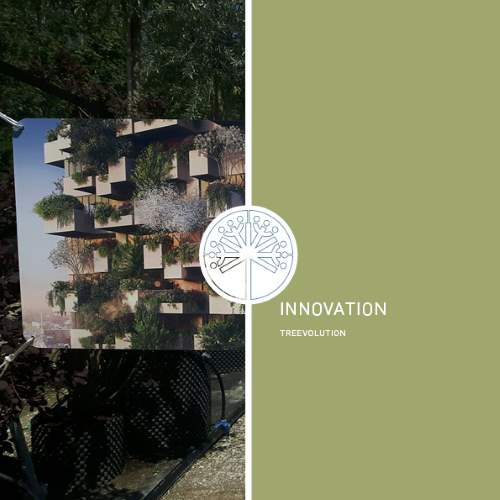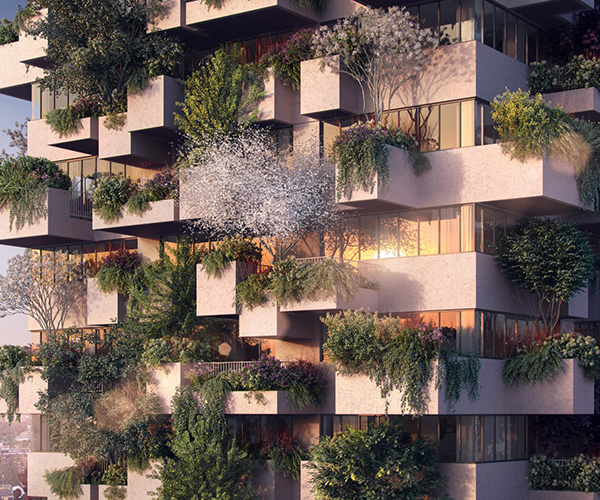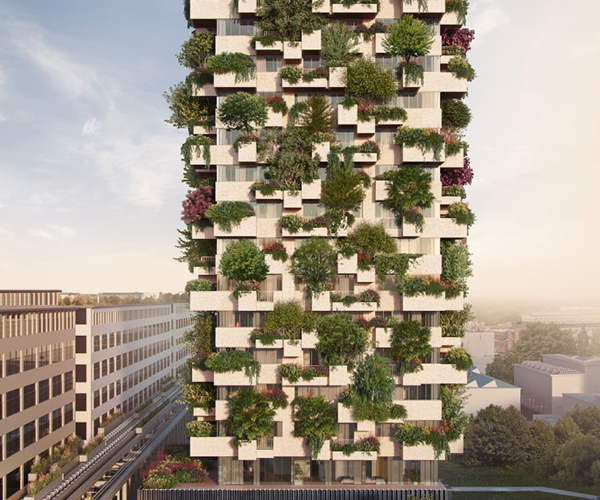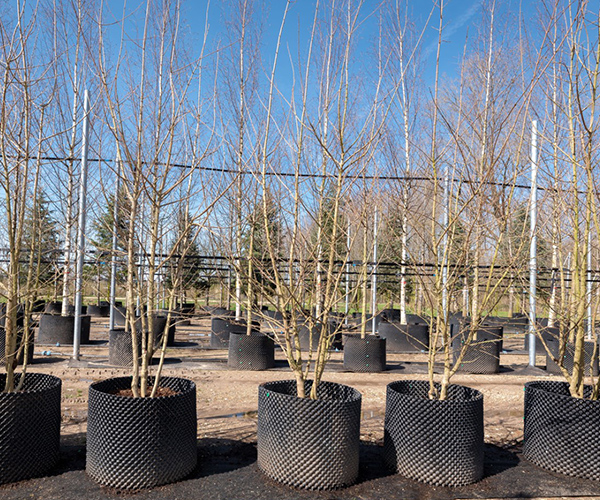

Trudo Vertical Forest
During 2020-2021, the first Vertical Forest in the Netherlands, the Trudo Tower, will be built in Eindhoven. The expertise of architect Stefano Boeri, who is already internationally renowned for the green residential towers in Milan, was commissioned by the Sint-Trudo housing association for the realisation of a green apartment complex on Strijp-S. The 70-metre high tower will be the first vertical forest intended for social housing. The building will get its green appearance from XL planters on the façade of each apartment. These planters will be filled with trees, shrubs and perennials, and the amount and size of the planting will create an entirely new, vertical green structure. It is a highly innovative form of urban development, which is perfectly in line with the urgency for making cities greener.



125 trees on 19 floors
In Eindhoven, a total of 125 trees will be planted on 19 floors. The root balls of the trees will be anchored to the planters and steel wire will be used to secure the trees to the building. The trees will be planted in a specially composed substrate. Together with landscape architect Laura Gatti and DuPré green contractors, a more or less indigenous and strong assortment was chosen so the forest would have the very best chance of thriving. In order to achieve an attractive overall look, a diverse range of foliage colour, leaf shape and blossom were of course also taken into account. For this reason, red and grey-leaved trees have been included in the planting and, as well as clear stem trees, multi-stem trees have been selected.
Watering and maintenance
An automatically controlled watering system must guarantee good regrowth in the Vertical Forest’s planters. All of the residential complex’s planters are fitted with sensors, which monitor water requirement and ensure that water is administered in time. A suitable maintenance plan is in the process of being drawn up. It will be carried out using a window cleaning system and is expected to be required four or five times a year.
Trees in airpot
In spring 2018, all of the trees were lifted and fitted with an ‘airpot’. Then they were checked personally by Laura Gatti and Stefano Boeri. In total, the trees remain on the drip irrigation system at Van den Berk for two to three years in the specially laid out field, until the project reaches the stage when they can be replanted. Lifting the trees and then placing them in airpots means they get over their transplantation stress while they are still at the nursery. The root balls can develop good roots because airpots encourage the growth of fine root hairs. This method produces root balls of the highest quality possible.
Green project group
A green project group was set up at an early stage for this ambitious and innovative project. With the input of expertise from various disciplines, the technical challenges could be properly mapped out. They jointly thought about the right growing place design. Tests were set up, suitable tree species discussed and trees were prepared early for on-site regrowth. An good example of integrated project development in which the best possible conditions have been created for the trees. The project group consisted of representatives of:
Woningcorporatie Sint Trudo
Sint Trudo, housing corporation
Stefano Boeri Architecti
Stam + de Koning, contruction
DuPré, green contractor
BvB Substrates
Van den Berk Nurseries
 English
English
 English (United Kingdom)
English (United Kingdom)
 Nederlands
Nederlands
 Nederlands (België)
Nederlands (België)
 Deutsch
Deutsch
 français
français
 čeština
čeština
 polski
polski
 español
español
 română
română
 dansk
dansk
 svenska
svenska
 magyar
magyar
 Türkçe
Türkçe
 slovenčina
slovenčina
 русский
русский
 norsk
norsk